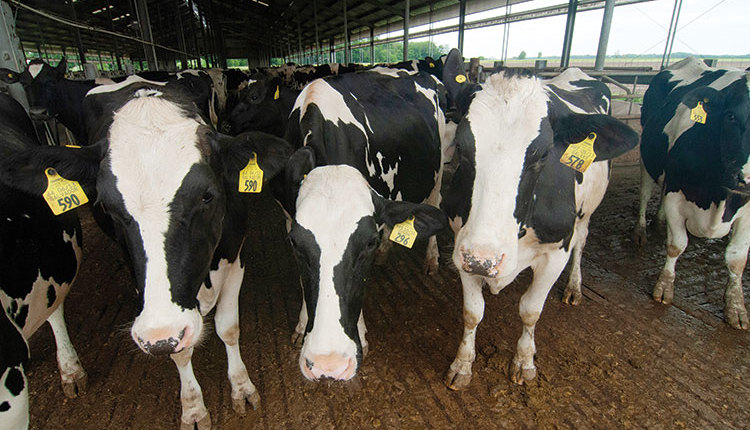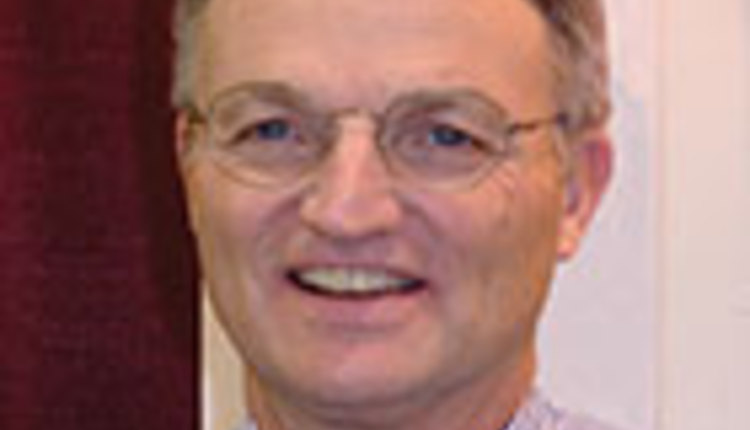The author is professor of animal sciences at Kansas State University, Manhattan.
When was the last time you or your A.I. technicians had an A.I. refresher course? A.I. breeding is not like riding a bicycle - once you master the skill of cycling you have no need of a refresher course.
In field day A.I. refresher course surveys, herdsmen inseminators confess to not knowing exactly where they deposit the semen approximately 40 to 50 percent of the time. Compounding the problem is the fact that dairy cows are more difficult to inseminate than beef cows or heifers because of the larger size of their reproductive tracts and its extra pelvic length. Let's re-examine the importance of semen placement and discuss the fate of sperm after deposition in the reproductive tract of the cow.
Not created equal
Many years ago, Ed Graham at the University of Minnesota conducted an important study that revealed the proficiency differences of A.I. technicians. Based on real field experiences and conception rates in cows, professional A.I. technicians were rated as above or below average.
These technicians were summoned to an A.I. refresher course in which they inseminated cows going to slaughter. They were instructed to inseminate cows in the normal target site - the uterine body. Instead of depositing semen, however, they deposited a dye product that color-marked the genital tissue at first contact upon insemination. Cows were then slaughtered, reproductive tracts removed, and incised to determine "site of insemination." The results are in Table 1.

It is clear that semen placed in the uterus differentiated the above average from the below average technicians. The largest difference among technicians was that the above average technicians never placed semen in the vagina or cervix.
Site of deposition
Research shows that sperm deposited into only one uterine horn of the cow will be transported to the other uterine horn - what is called intercornual transport. Sperm deposited in one horn will redistribute to both uterine horns so both horns eventually contain substantial numbers of sperm. Fertility is not compromised when semen is deposited in the uterine body or in either or both of the horns (Table 2). Only cervical depositions reduce conception rates!
Dr. Phil Senger points out in his colorful reproductive physiology text that, for years, it was erroneously assumed that most sperm find their way into the oviducts after A.I. In recent studies, however, a large proportion of sperm deposited in the uterus of the cow are lost from the tract by retrograde transport. In most cows, approximately 60 percent of sperm inseminated into the uterus are lost to the exterior within 12 hours. Most of these sperm are lost via mucous discharge and urination.
One would assume then that deeper insemination of sperm into both uterine horns might prevent these retrograde sperm losses. On the contrary, sperm losses were similar whether semen deposition occurred in the uterine body or in both uterine horns (one-half of the inseminate placed 2.5 inches beyond the uterine body into each horn).
Senger's group repeated the experiment and found twice as many sperm losses when the inseminate was deposited into the cervix rather into both uterine horns. When semen is deposited beyond the cervix into the uterine body or into one or both uterine horns, conception rates do not differ (Table 2). In fact, uterine body or horn inseminations guarantee that the semen was deposited in the uterus and bypasses the cervix where conception rates will be reduced.

We understand very little about what regulates sperm transport in the cow after A.I. breeding. We do know that after insemination, sperm are transported either in a rapid transport phase or a sustained transport phase. Within a few minutes of sperm deposition, sperm can be found in the oviducts (site of fertilization). Research has demonstrated that these rapidly transported sperm are not viable or normal sperm.
The more important component of transport is the sustained phase where sperm are transported to the oviducts in a "trickle-like" effect from the so-called reservoirs in the cervix and the uterotubal junction (junction between the uterine horn and the oviduct). The sustained sperm transport phase delivers sperm to the ampulla portion of the oviduct in a more uniform manner over a sustained period of time.
After A.I. breeding, the population of sperm found at the uterotubal junction is capable of fertilizing the egg after ovulation. It is important that a large portion of sperm is found at that junction so fertilization rates can be maximized. Correct semen placement is even more critical when using reduced doses of sexed or gender-biased semen. Generally, conventional semen is packaged in doses of 10 to 30 million sperm. Sexed semen doses contain significantly fewer sperm in the range of 2 to 4 million.
Therefore, site of semen deposition is very important in any insemination program, whether A.I. breeding at estrus or by appointment in a timed A.I. program. Contact your A.I. representative or university extension specialist about enrolling in an A.I. refresher course. Remember, it may only take one sperm, but let's put as many sperm in the right place as possible.
Click here to return to the Reproduction E-Sources
100810_528
In field day A.I. refresher course surveys, herdsmen inseminators confess to not knowing exactly where they deposit the semen approximately 40 to 50 percent of the time. Compounding the problem is the fact that dairy cows are more difficult to inseminate than beef cows or heifers because of the larger size of their reproductive tracts and its extra pelvic length. Let's re-examine the importance of semen placement and discuss the fate of sperm after deposition in the reproductive tract of the cow.
Not created equal
Many years ago, Ed Graham at the University of Minnesota conducted an important study that revealed the proficiency differences of A.I. technicians. Based on real field experiences and conception rates in cows, professional A.I. technicians were rated as above or below average.
These technicians were summoned to an A.I. refresher course in which they inseminated cows going to slaughter. They were instructed to inseminate cows in the normal target site - the uterine body. Instead of depositing semen, however, they deposited a dye product that color-marked the genital tissue at first contact upon insemination. Cows were then slaughtered, reproductive tracts removed, and incised to determine "site of insemination." The results are in Table 1.

It is clear that semen placed in the uterus differentiated the above average from the below average technicians. The largest difference among technicians was that the above average technicians never placed semen in the vagina or cervix.
Site of deposition
Research shows that sperm deposited into only one uterine horn of the cow will be transported to the other uterine horn - what is called intercornual transport. Sperm deposited in one horn will redistribute to both uterine horns so both horns eventually contain substantial numbers of sperm. Fertility is not compromised when semen is deposited in the uterine body or in either or both of the horns (Table 2). Only cervical depositions reduce conception rates!
Dr. Phil Senger points out in his colorful reproductive physiology text that, for years, it was erroneously assumed that most sperm find their way into the oviducts after A.I. In recent studies, however, a large proportion of sperm deposited in the uterus of the cow are lost from the tract by retrograde transport. In most cows, approximately 60 percent of sperm inseminated into the uterus are lost to the exterior within 12 hours. Most of these sperm are lost via mucous discharge and urination.
One would assume then that deeper insemination of sperm into both uterine horns might prevent these retrograde sperm losses. On the contrary, sperm losses were similar whether semen deposition occurred in the uterine body or in both uterine horns (one-half of the inseminate placed 2.5 inches beyond the uterine body into each horn).
Senger's group repeated the experiment and found twice as many sperm losses when the inseminate was deposited into the cervix rather into both uterine horns. When semen is deposited beyond the cervix into the uterine body or into one or both uterine horns, conception rates do not differ (Table 2). In fact, uterine body or horn inseminations guarantee that the semen was deposited in the uterus and bypasses the cervix where conception rates will be reduced.

We understand very little about what regulates sperm transport in the cow after A.I. breeding. We do know that after insemination, sperm are transported either in a rapid transport phase or a sustained transport phase. Within a few minutes of sperm deposition, sperm can be found in the oviducts (site of fertilization). Research has demonstrated that these rapidly transported sperm are not viable or normal sperm.
The more important component of transport is the sustained phase where sperm are transported to the oviducts in a "trickle-like" effect from the so-called reservoirs in the cervix and the uterotubal junction (junction between the uterine horn and the oviduct). The sustained sperm transport phase delivers sperm to the ampulla portion of the oviduct in a more uniform manner over a sustained period of time.
After A.I. breeding, the population of sperm found at the uterotubal junction is capable of fertilizing the egg after ovulation. It is important that a large portion of sperm is found at that junction so fertilization rates can be maximized. Correct semen placement is even more critical when using reduced doses of sexed or gender-biased semen. Generally, conventional semen is packaged in doses of 10 to 30 million sperm. Sexed semen doses contain significantly fewer sperm in the range of 2 to 4 million.
Therefore, site of semen deposition is very important in any insemination program, whether A.I. breeding at estrus or by appointment in a timed A.I. program. Contact your A.I. representative or university extension specialist about enrolling in an A.I. refresher course. Remember, it may only take one sperm, but let's put as many sperm in the right place as possible.
100810_528










